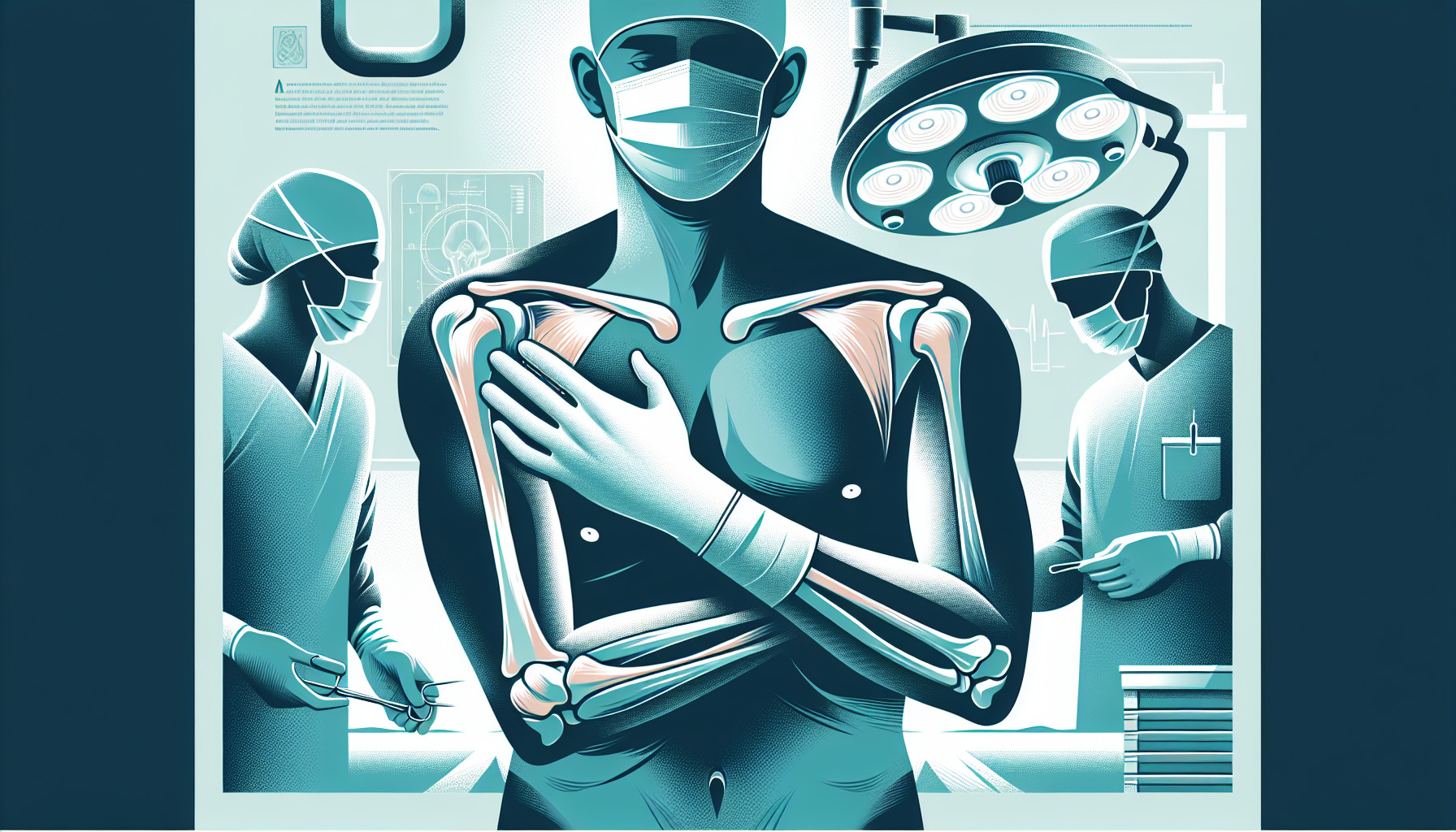Our Summary
This study looked at past research to understand the impact of a specific type of shoulder repair surgery (subscapularis repair) on patients who underwent a reverse shoulder arthroplasty (RSA), which is a type of shoulder replacement surgery.
The researchers looked at 17 different studies, which included more than 2600 patients. They found that patients who had the subscapularis repair were less likely to experience instability in their shoulder compared to those who didn’t have the repair. However, there wasn’t a significant difference in complication rates, the need for additional surgery, or instability when a certain technique (lateralization) was used.
Patients who had the subscapularis repair scored higher on two measures of shoulder function and had better forward flexion (ability to move the arm forward) and internal rotation (ability to rotate the arm inward). However, there wasn’t a significant difference in their pain levels, ability to rotate the arm outward or lift the arm to the side (abduction).
In summary, the subscapularis repair seemed to reduce the risk of shoulder instability and improve some measures of function, but it didn’t make a big difference in other areas like the need for additional surgery, complications, or certain types of movement.
FAQs
- What impact does the subscapularis repair have on patients who undergo a reverse shoulder arthroplasty?
- Does the subscapularis repair impact the need for additional surgery or complications in patients who underwent a reverse shoulder arthroplasty?
- What are the benefits of the subscapularis repair in terms of shoulder function and movement?
Doctor’s Tip
A helpful tip a doctor might tell a patient about shoulder replacement is to discuss the possibility of having a subscapularis repair during the surgery to potentially improve shoulder function and reduce the risk of instability. It’s important for patients to have a thorough discussion with their surgeon about the potential benefits and risks of this additional procedure before making a decision. Additionally, following a proper rehabilitation plan after surgery is crucial to optimize recovery and regain full function of the shoulder.
Suitable For
Patients who are typically recommended for shoulder replacement surgery, including reverse shoulder arthroplasty with subscapularis repair, are those who have:
- Severe shoulder arthritis or degenerative joint disease
- Chronic shoulder pain that limits daily activities
- Limited range of motion in the shoulder
- Failed previous conservative treatments such as physical therapy, medications, and injections
Additionally, patients who have a history of shoulder instability or rotator cuff tears may benefit from shoulder replacement surgery with subscapularis repair to improve stability and function in the shoulder joint. It is important for patients to discuss their specific symptoms and medical history with a healthcare provider to determine if shoulder replacement surgery is the best treatment option for them.
Timeline
Timeline before and after shoulder replacement surgery:
Before surgery:
- Patient experiences chronic shoulder pain, stiffness, weakness, and limited range of motion.
- Patient undergoes a thorough evaluation by a healthcare provider, including imaging tests such as X-rays and MRI to diagnose the extent of the shoulder damage.
- Patient and healthcare provider discuss treatment options, including non-surgical interventions such as physical therapy, medications, and injections.
- If conservative treatments are unsuccessful, patient and healthcare provider decide on shoulder replacement surgery as the best course of action.
After surgery:
- Immediately post-surgery, patient may experience pain, swelling, and limited mobility in the shoulder.
- Patient undergoes physical therapy to regain strength, flexibility, and range of motion in the shoulder.
- Over the next few weeks to months, patient gradually improves in shoulder function and experiences reduced pain.
- Patient continues with prescribed exercises and therapy to optimize recovery and prevent complications.
- Patient may need to avoid certain activities and movements to protect the new shoulder joint.
- In the long term, patient enjoys improved shoulder function, reduced pain, and increased quality of life.
What to Ask Your Doctor
Some questions a patient should ask their doctor about shoulder replacement surgery, specifically regarding the subscapularis repair, include:
What is the purpose of the subscapularis repair during a reverse shoulder arthroplasty?
What are the potential benefits of having the subscapularis repair compared to not having it?
What are the potential risks or complications associated with the subscapularis repair?
How will having the subscapularis repair impact my recovery process and long-term outcomes?
Will the subscapularis repair improve my range of motion, strength, and overall function in the shoulder?
Are there alternative techniques or procedures that could achieve similar results without the subscapularis repair?
How often do you perform subscapularis repair during reverse shoulder arthroplasty, and what is your experience with this technique?
Are there any specific factors about my shoulder condition or overall health that may impact the decision to have the subscapularis repair?
What are the expected outcomes and success rates for patients who undergo a reverse shoulder arthroplasty with a subscapularis repair?
Are there any specific post-operative care or rehabilitation protocols that I should follow to optimize the results of the subscapularis repair?
Reference
Authors: Bethell MA, Hurley ET, Welch J, Cabell G, Levin J, Lassiter TE, Boachie-Adjei YD, Anakwenze O, Klifto CS. Journal: J Shoulder Elbow Surg. 2023 Dec;32(12):2631-2640. doi: 10.1016/j.jse.2023.06.011. Epub 2023 Jul 18. PMID: 37473906
